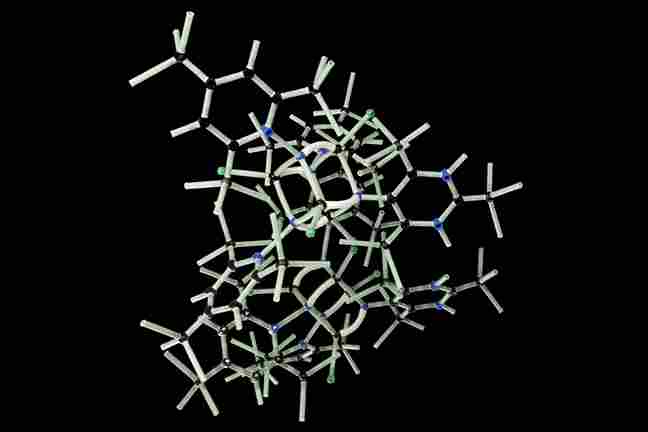It has long been accepted that the element of certainty is essential to the rule of law. Long-standing legal principle dictates that the law should be certain and accessible, so it can be easily enforced and people can know where they stand. But in an ever more complicated world, that task is becoming increasingly complex.
Photo by Holger Link, Unsplash
Our own drug laws are undoubtedly a case in point. Once upon a time, a bag of dope was a bag of dope. But these days it’s not quite so simple.
Last week in the Brisbane District Court I represented a client charged with trafficking in dangerous drugs. He wasn’t some souped-up drug dealer pushing pills to junkies out on the streets, but the director of a company that operates a chain of adult retail stores throughout Queensland. The prosecution alleged that, along with an impressive array of sex toys and other weird and wonderful paraphernalia, the stores sold herbal products, described as “potpourri” and marketed under exotic brand names such as “Supanova,” “Twisted Tea” and “Mojo.” None of those products was actually listed as a prohibited substance in the Drugs Misuse Act but, by a process of expert analysis and opinion, each of them was assessed by police and prosecuting authorities to qualify as a dangerous drug, by operation of extended definition provisions in the DMA.
Let me explain. Shortly before the company’s stores were raided by police, almost four years ago, the definition of a dangerous drug was extended to include, not only a drug named in the act, but any substance that had a “substantially similar chemical structure” to any such drug. That left a lot of people scratching their heads as to whether substances they had in their possession were or were not dangerous drugs, so some suppliers of products like “Supanova” commissioned and circulated to their retailer customers expert scientific opinions which asserted they were neither listed drugs nor “substantially similar” in chemical structure to such drugs. Unfortunately for my client, the police commissioned their own experts, whose opinion went the other way.
At the trial the prosecution called one such expert to give evidence that she had compared two-dimensional diagrammatical representations of the molecular structure of each of the products with similar diagrammatical representations of listed drugs, and that such comparison showed there were only one or two molecular differences between the chemical structure of the respective items. As to what pharmacological effect those differences had, she had no idea. She was concerned only with the number of atoms and how they were arranged in the molecule. But, on the basis there were only one or two differences identified, the Crown argued the jury should be satisfied (beyond reasonable doubt) the products had a “substantially similar chemical structure” to the listed drugs.
Under cross-examination, the scientist conceded she could have compared three-dimensional diagrammatical representations of the products and the drugs, which would have disclosed further features of the molecular structure of each, and perhaps may have shown further differences. But she didn’t do that. She compared only the two dimensional representations, which comparison showed only one or two differences, of unknown pharmacological effect, and she agreed even such small molecular changes could have a significant effect on the way the chemical behaved. For example, by adding one atom of oxygen to water (H2O) it becomes the mild antiseptic hydrogen peroxide (H2O2), just as one atom of oxygen will convert the sinus decongestant pseudoephedrine into methylamphetamine, commonly known as the drug ice. But nonetheless the prosecutor maintained that, given there were only one or two molecular differences, the jury should be satisfied the substances in question remained “substantially similar” in chemical structure.
Not surprisingly perhaps, in a written message sent to the judge, the jury astutely inquired whether the legislation included a definition of “substantially similar.” The short answer to that question is “no.” The issue of whether two chemical structures are similar and, if so, whether that similarity is substantial or not, is wholly a matter of opinion, and it’s safe to assume that, as with most matters scientific or otherwise, reasonable minds will inevitably differ on the issue.
Fortunately for my client, the jury ultimately wasn’t required to deliberate on the point because the Crown withdrew the charges on day two of the trial, and the defendant was discharged. But the proceedings brought into sharp focus the considerable uncertainty that has crept into the provisions of the DMA in recent years.
Since my client was charged the legislature has seen fit to further amend the extended definition several times. Under the latest iteration, a dangerous drug is said to include not only those drugs actually listed in the DMA, but also – wait for it – any derivative or stereo-isomer or salt of any such drug, or any analogue of any such drug, which includes a structural isomer with the same constituent groups, an alkaloid, a structural modification that is the replacement of up to 2 carbolic or heterocyclic ring structures with different carbolic or heterocyclic ring structures, the addition of hydrogen atoms to one or more unsaturated bonds, or the replacement of one or more nominated groups or atoms, and any other homologue.
How certain the average punter may be of what all that means is anyone’s guess, as is, perhaps, the extent to which learned scientific minds will differ in expert opinion. But arguably adding to such general uncertainty, the extended definition of a dangerous drug also includes any substance that has, “or is intended to have,” a pharmacological effect of a dangerous drug. Naturally the act leaves undefined what are the pharmacological effects of each of the presumably very broad range of substances caught by the extended definition, but in any event the use of the indefinite article in the provision suggests if the accused has the intention the substance will have one (not necessarily all) of the pharmacological effects of any such substance, then it is a dangerous drug.
The extent to which such latest amendments have rendered the law certain is no doubt itself uncertain. Only time, and I suspect many hours of court time, will ultimately tell.












